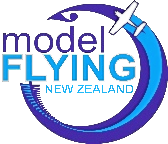
Learning To Fly & Getting Started
Learning to fly radio control can be an exciting start to a fascinating life-long hobby, or it can be a costly and frustrating exercise. As a beginner you will want to get the best advice and training right from day 1.
The best way to get this is to call us or come and see us at the club - you will get a warm welcome, you will get lots of free helpful advice, and you can fly one of our dual control club trainers, with a certified instructor.
We will advise you on the right type of model to start with (VERY IMPORTANT!), the right type of engine, and recommend the most suitable radio gear appropriate to your aims and your budget. We can help with suitable models, engines, and radio sets; and ensure you are buying gear that is best suited to a beginner.
Here is some general advice for the beginner:-
The typical trainer model is designed to be stable and easy to fly, with some self-correcting abilities built in.
To be suitable as a trainer a model must have a high wing, with a flat bottom wing section, and a reasonable amount of dihedral (i.e. the wings form a shallow V shape when viewed from the front of the plane). You can purchase and build a kit, or you can get an ARF kit, that is a kit where all the building and covering is done for you and you just have some simple assembly to do.
Either way, if you are not sure what to buy or how to proceed then feel free to contact us for advice.
Models are usually classed by the size of their engine, and the most popular size is the 40, (for .40 cubic inch). These trainers are around the 1.6 to 1.75 meter wing span (62-70") which is a good size for stability and for visibility (they get very small very quickly in the air!). An important advantage is that the motor is common size for the sort of models that you will graduate to once you are past the training stage.
There is a wide range of suitable motors available, O.S. , Super Tigre , ASP, JBA are a few of the most popular.
The radio gear should be a minimum of 4 channels. For many fliers this will be enough, but if you expect to fly models with retracting wheels, flaps, or other such features later then you may need more. The basic 4 channels control the throttle, the elevator (up and down), the ailerons (bank left or right), and the rudder. Popular makes include Futaba, JR, and Hitec. The controls can be set up in several different ways e.g. the throttle can be controlled by the right stick (mode 1) or the left stick (mode 2). Make sure you match the mode of your instructor.
That was a very basic guide to what you need. The main purpose is to stop beginners from wasting money buying unsuitable equipment and ending up frustrated. So don't be shy - come and see us before purchasing anything.
This is doubly important with 2nd hand gear.
The best time to visit the field if you’re wanting more information is on a Sunday. Flying is done any day of the week, but the majority of the instructors will be there on Sunday's and available to answer your questions or give you an introduction flight. Mid-morning is usually a good time, but if unsure contact us to make sure someone will be there to meet you.
So - see you at the strip, and Happy flying!

The instructor on the right demonstrates the BUDDY BOX system, by putting a club member through his paces . This is two transmitters linked by an umbilical cord, as long as the instructor has pressure on the dead man switch, the new pilot has complete control. Should difficulties arise the instructor lets go of the deadman switch, thus giving him control, returns the aircraft to a level flight attitude, and then hands control back to the trainee. By far, learning to do figure of eights in both directions, would have to be the most valuable traing lesson on the Buddy Box. You learn so many skills with this one simple exercise. Some of the more obvious are; level flight, contorlled turns in both directions, control when the aircraft is flying away from you and toward you, completeing all these maneuvers within a designated airspace, multiple control surface adjustments at the same time. As you can see the list is endless. It is not as difficult as it seems, all our instructors are very talented flyers and will take you through each step by step process and have you in control on the first go. Come on out and see us, tell a club member you are interested in having a go, and you will be in the air in no time.

Click the link below to take you to an article about flight simulators. What to look for and what to expect when you purchase one.


